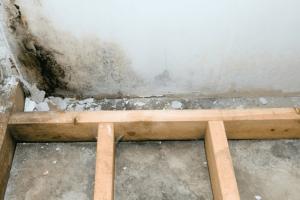Ultimate Guide to Cleaning Mold in Your Basement: Tips & Techniques

-
Quick Links:
- Introduction
- Understanding Mold
- Health Risks of Mold in Basements
- Identifying Mold in Your Basement
- Step-by-Step Guide to Cleaning Mold
- Best Mold Removal Products
- Preventing Future Mold Growth
- Case Studies
- Expert Insights
- FAQs
Introduction
Mold in basements is a common issue faced by homeowners, especially in humid environments. Mold not only compromises the aesthetics of your home but also poses serious health risks. The good news is that cleaning mold in your basement is achievable with the right knowledge and tools. This guide aims to provide you with detailed insights, effective techniques, and preventive measures to keep your basement mold-free.
Understanding Mold
Mold is a type of fungus that thrives in moist environments. It reproduces through tiny spores that can be airborne and are often responsible for allergic reactions and respiratory issues. Understanding the types of mold and their growth conditions is crucial for effective remediation.
Types of Mold
- Aspergillus: Commonly found in household dust and can cause allergic reactions.
- Cladosporium: Prefers cooler environments and is often found on fabrics and wood.
- Stachybotrys: Also known as black mold, it is harmful and thrives in damp areas.
Health Risks of Mold in Basements
Exposure to mold can lead to various health issues, particularly for sensitive individuals. Common symptoms include:
- Respiratory problems
- Allergies and asthma exacerbation
- Skin irritation
- Fatigue and headaches
According to the CDC, prolonged exposure to mold can result in more severe health issues, making it essential to address any mold presence in your home promptly.
Identifying Mold in Your Basement
Identifying mold growth is the first step towards remediation. Look for:
- Visible growth on walls, floors, or ceilings
- A musty odor
- Water stains
Perform regular inspections to catch mold early, especially in areas prone to moisture.
Step-by-Step Guide to Cleaning Mold
Cleaning mold requires a systematic approach to ensure safety and effectiveness. Follow these steps:
Step 1: Prepare the Area
- Seal off the area to prevent spores from spreading.
- Wear protective gear: gloves, mask, and goggles.
Step 2: Remove Affected Materials
If mold has penetrated porous materials like drywall, it may be necessary to remove and replace those materials entirely.
Step 3: Clean Non-Porous Surfaces
For non-porous surfaces, use a mixture of water and detergent or a commercial mold remover. Scrub the area thoroughly and rinse with clean water.
Step 4: Dry the Area
After cleaning, ensure the area is completely dry to prevent mold from returning. Use fans or dehumidifiers if necessary.
Step 5: Monitor for Future Growth
Keep an eye on the area over the following weeks to ensure that the mold does not return.
Best Mold Removal Products
There are various products available for mold removal. Here are some highly recommended options:
- RMR-86 Instant Mold Stain Remover: Effective on tough stains.
- Mold Armor Clean-Up: A strong cleaner for various surfaces.
- Concrobium Mold Control: Prevents mold from returning.
Preventing Future Mold Growth
To prevent mold from returning, consider the following:
- Maintain humidity levels below 50%.
- Fix leaks promptly.
- Ensure proper ventilation in the basement.
Case Studies
Understanding real-life scenarios can provide valuable insight into effective mold remediation. Here are a couple of case studies:
Case Study 1: A Family’s Battle with Black Mold
A family in a humid region discovered black mold in their basement. After identifying the source of moisture, they followed a systematic cleaning process and installed a dehumidifier, successfully eliminating the mold.
Case Study 2: Post-Flood Mold Challenges
After a flood, a homeowner faced extensive mold growth. They consulted a professional mold remediation service, which not only cleaned the area but also provided ongoing monitoring solutions to prevent future growth.
Expert Insights
Experts emphasize the importance of addressing moisture issues as a first step in mold prevention. Regular maintenance checks can significantly reduce the risk of mold growth.
Consulting with a professional can also provide tailored solutions based on your specific situation.
FAQs
1. What causes mold to grow in basements?
Mold thrives in damp, humid environments, which are common in basements due to poor ventilation and moisture.
2. How can I prevent mold from coming back?
Keep humidity levels low, fix leaks, and ensure proper ventilation to prevent mold from returning.
3. Is mold removal safe to do myself?
It can be safe for small areas, but large infestations are best handled by professionals.
4. What are the health risks of mold exposure?
Exposure can lead to respiratory issues, allergic reactions, and other health problems.
5. How do I know if I have mold in my basement?
Look for visible growth, musty odors, or water stains as signs of mold presence.
6. Can I use bleach to clean mold?
While bleach can kill mold on non-porous surfaces, it may not be effective on porous materials and can lead to regrowth.
7. What should I wear when cleaning mold?
Wear gloves, a mask, and goggles to protect yourself from mold spores.
8. How long does it take for mold to grow?
Mold can start to grow within 24 to 48 hours under the right conditions.
9. Do I need to remove furniture to clean mold?
Yes, removing items can help access the mold and prevent spores from spreading.
10. When should I call a professional?
If mold covers a large area or if you have health concerns, it’s best to consult a professional.
Random Reads
- How to register domain name
- How to reinstall windows 8 without a cd
- How to cut flagstone
- How to cut led strip lights
- How to use sketchup installing basics structures
- How to give a negative employee reference
- How to save fillable pdf chrome
- How to install linux
- Pokemon ruby vs sapphire vs emerald
- Pair wii remote